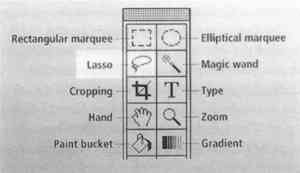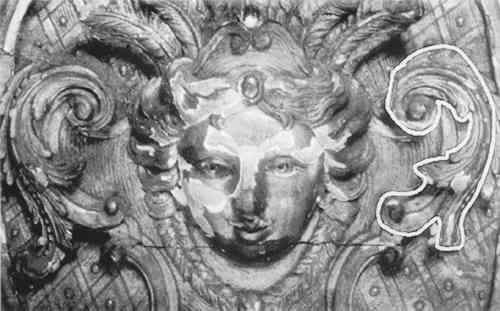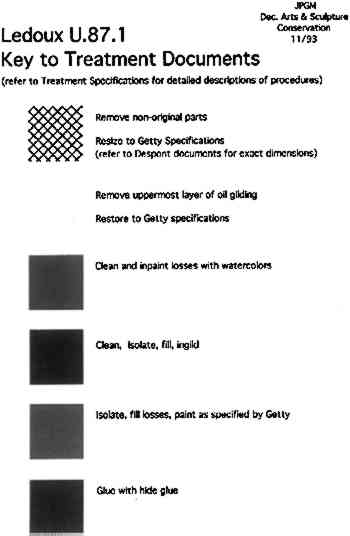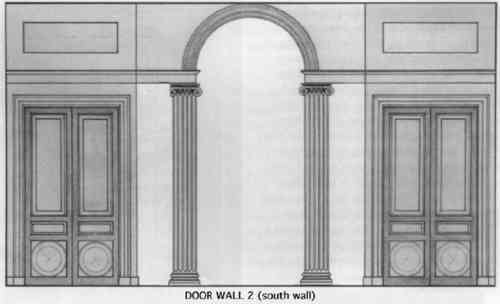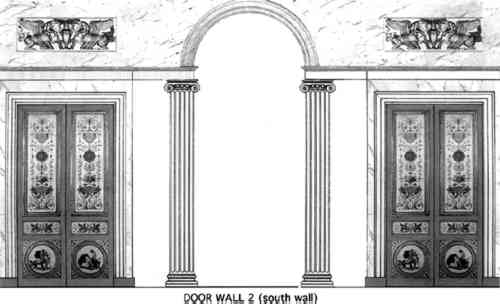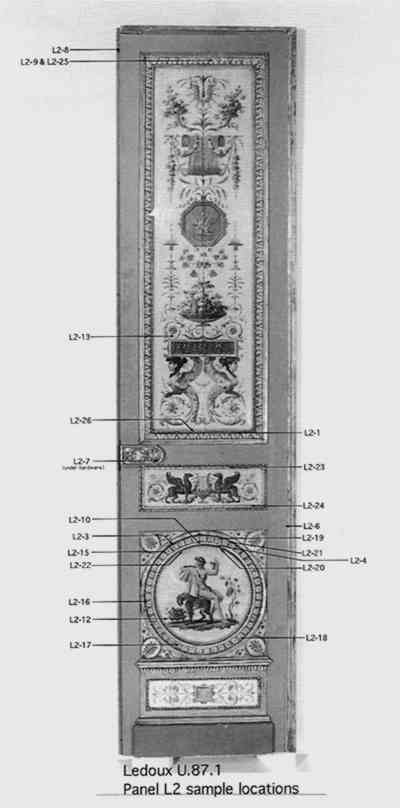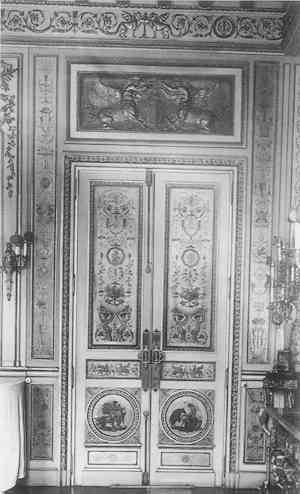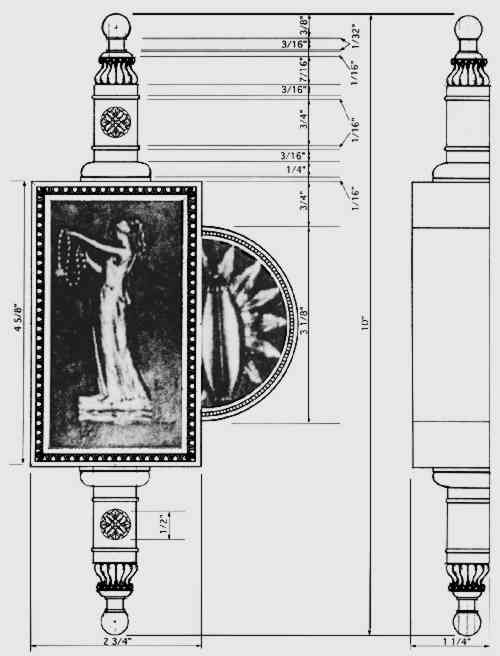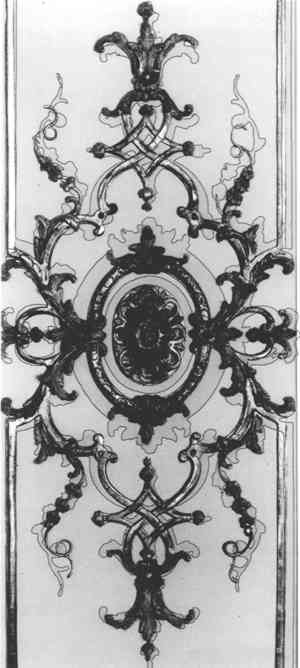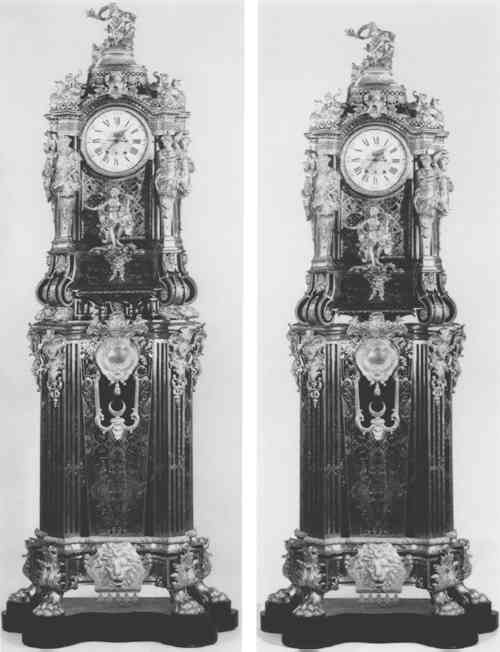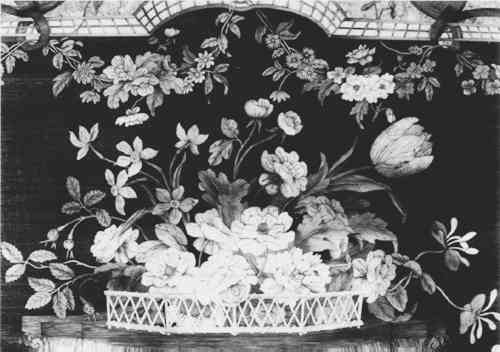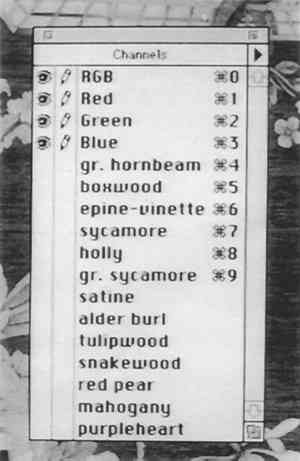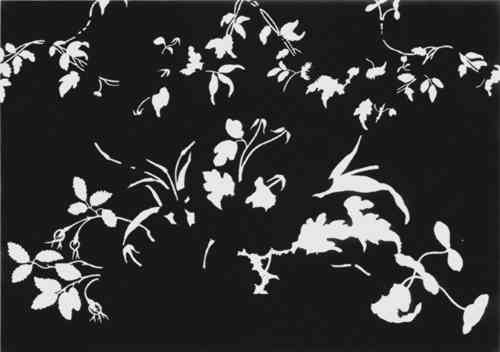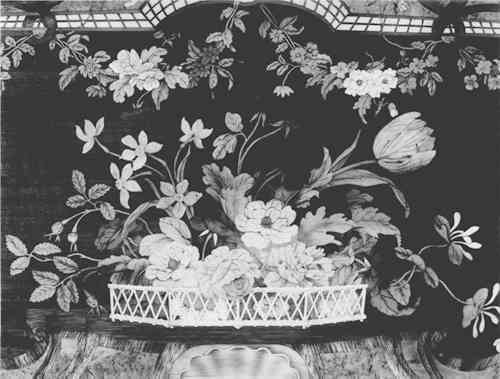SOME APPLICATIONS OF ADOBE PHOTOSHOP FOR THE DOCUMENTATION OF FURNITURE CONSERVATIONJOSEPH GODLA, & GORDON HANLON
ABSTRACT—Adobe Photoshop image manipulation software is being used for a wide variety of purposes on the furniture and room paneling at the J. Paul Getty Museum. The software was first employed in a project involving the documentation of paneling from five period rooms prior to their conservation. It enabled conservators to document accurately alterations such as restorations and surface damage. The use of the software in the museum has expanded to include the manipulation of digital images to aid their visual interpretation for research purposes; analysis enhancement; accurate comparison of related objects; and as an education tool. The authors outline the materials and equipment most commonly used and conclude with case studies illustrating the range and depth of the possibilities for using image manipulation software in furniture conservation. 1 INTRODUCTIONDuring the last 10 years there has been a great expansion in the application of computer technology in conservation. In 1985 the Canadian Group of the International Institute for Conservation held a workship in Halifax, Nova Scotia, on the application of aspects of computer technology (Perkins 1985). This event and a follow-up workshop in 1994 covered a range of issues that affect the practicing conservator, such as setting up databases, using information networks, writing condition reports on portable computers, and monitoring environmental conditions. As hardware and software technology have developed and equipment costs have declined, computers have increasingly become part of a conservator's work. Computers for word processing are a common feature in conservation laboratories, and conservators are using portable computers for off-site condition-report writing or collection surveys. This article describes computer-assisted image manipulation, which is coming within the economic reach of museums as imaging hardware and software costs drop. 2 SYSTEM2.1 HARDWAREThe system used by the Decorative Arts and Sculpture Conservation Department at the J. Paul Getty Museum is an Apple Macintosh Quadra 840AV with a Radius Intellicolor Display/20 monitor, using the image manipulation software Adobe Photoshop 3.0. The minimum system requirements for using the software on an Apple system are: a Macintosh II computer with a 68020 processor (or any later model) with minimum of 6 megabytes (MB) of application random-access memory (RAM), or a Power Macintosh with a minimum of 11 MB of application RAM; Apple system software 7.0 or higher. Expansion of the basic storage and working memory is recommended, as the image files created can be very large, ranging from 1 to 50 MB. The Decorative Arts and Sculpture Conservation Department's system has a 250 MB internal hard drive, a 1000 MB external drive, 40 MB of RAM, and a 24-bit video card. When using Adobe Photoshop on an IBM-compatible 2.2 SOFTWAREAdobe Photoshop is an image manipulation software that allows the editing of digital images. This program was initially developed for commercial applications in graphic design or photography. In Adobe Photoshop the images are bitmapped, or composed of a series of dots or pixels. Therefore, a straight line is made up of a series of individual pixels. Adobe Photoshop's tools enable single or multiple images to be modified and then edited, color balanced, and manipulated. Images can be combined, enhanced with digital filters, or enlarged in areas to allow life-size documentation of deterioration or treatment. Although many different types of alterations can be made to images—ranging from perspective distortions to special effects created with filters—most conservation uses, such as documentation, can be achieved with a few straight-forward commands chosen from the pull-down menus. The files created by Adobe Photoshop are often very large due to the complexity or resolution of the images, so an operation can take a long time to process. Speed and efficiency can be increased in several ways. One method is to work with temporary files that contain only sections of the complete larger file. At the end of a series of operations, the temporary and overall file can be merged. Another technique for the complex annotation of an image is to use a black-and-white version of a color file, since gray-scale images are about one-third the size of color (RGB) images. 2.3 INPUTTING IMAGESThere are various methods of inputting a digital image. Digital capture cameras are available and are being investigated by the Getty Museum's Photographic Services Department. Infrared images can be captured from Vidicon cameras and transferred into digital signals for storage and further manipulation. The Decorative Arts and Sculpture Conservation Department uses a color scanner system to input photographs or transparent images (either negative or positive), such as transparencies or x-radiographs. Different parameters can be set before scanning. The resolution of the scan is the most important parameter. Although scanning at a high resolution results in an accurate, detailed image, it inevitably creates a very large file, and the time for manipulation operations is greatly increased. The user needs to strike a balance between the detail of the image (determined by the resolution of the scan) and the speed of manipulation. The scanner used at the Getty is the Sharp Commercial Color Image Scanner, model JX-600. A computer service bureau can provide input by scanning photographs onto storage media for transport. Or compact discs can be made, either by supplying color transparencies or by having film directly recorded onto a CD. 2.4 OUTPUT (OR PRINTING)Once an image is scanned into the computer, Adobe Photoshop can be used to manipulate it. On completion of the annotation, the image can be printed either to a conventional black-and-white or color laser printer or to a digital image printer. We found the Fujix Pictography 3000 Digital Image Printer best suited to our purposes. It produces high-quality color prints or transparencies by a laser-exposed, thermal development transfer method using digital image data received from the host computer. This printer provides accurate color rendering and sharpness of image. It is also possible to take files to a computer service bureau that can make high-quality prints. 2.5 STORAGEAs with all computer systems, file backup is essential. Although files can be stored on the hard drive, any system crash risks the loss of valuable content as well as time expended in its creation. Unlike the backup of word processing files, which can easily be accomplished using floppy disks (maximum storage capacity 1.44 MB), many graphics files will be too large to fit on a floppy disk. A file compression system can be used, but some information and therefore clarity is lost during the compression and the subsequent decompression. Because image files are large—from 500 bytes to 50 MB—an alternative system for storage and backup usually is required. The options include storage systems such as Magneto Optical drives, DAT drives, SyQuest systems, and CD-ROM drives. The choice of system depends on the storage size requirements; the cost of the drive and storage medium; and the stability of the storage medium. At present, only a CD-ROM system is considered to be of archival quality. As these systems are relatively new, their long-term stability must be seriously considered. Because 30 people at the Getty Museum use Adobe Photoshop on a network, a CD-ROM system was chosen. It uses a “write once” CD system (JVC Personal Archiver), which runs on the Apple computer and allows the archiving of files onto CDs. The standard format of the CD-ROM, its large storage capacity (600 MB), and its ability to be read on inexpensive CD-ROM players make it a very reasonable solution. The comparatively recent commercial expansion of the CD-ROM market has greatly reduced the cost of both CD writers and the blank CD media, a trend that will soon reduce the cost drastically and make a CD-ROM system a cost-effective storage medium. 3 DOCUMENTATIONGetty conservators acquired digital imaging and manipulation software to document conservation work and technical examination projects. The aim was to increase the accuracy and durability of documentation procedures. Previously, photographs or photocopies had been used to detail and document a wide range of observations or treatments. Adobe Photoshop was initially used in the laboratory to record the analysis and condition of an object as well as the conservation treatments undertaken to remedy these problems. The documentary images, with a written report, convey information visually for conservation records and provide a valuable visual tool to illustrate observations and concerns in discussions with curators, registrars, and other museum personnel. The first major documentation project entailed the production of detailed condition reports and treatment specifications for the paneling from five 18th-century period rooms that are to be installed in the new Getty Museum in West Los Angeles, California. The large scope of this conservation project required very accurate specifications, both written and visual, to illustrate the method, extent, and desired finish of the conservation work. After scanning in black-and-white photographs, conservators manipulated the resulting digital images using Adobe Photoshop to allow detailed, color-coded documentation of different features, such as areas of restoration or structural damage. One of the selection tools (fig. 1) was used in conjunction with the mouse to either block or outline the perimeter of the area to be emphasized (fig. 2). Areas thus selected could be shaded or filled with a color of choice to denote the type of deterioration or treatment being defined (figs. 3, 4). After this test project, the advantages of computer image documentation became apparent. The ability to work accurately at life size (or larger), annotate photographs, and store images digitally resulted in the use of this system for the documentation of more routine treatments. Due to the large scope of the period room documentation project, a number of conservators from the department were enlisted to help with the work.
4 OTHER USES OF ADOBE PHOTOSHOPAs conservators working with Adobe Photoshop become more familiar with its features, the range of applications is expanding. Areas that have been developed include the visual presentation of research information, analytical enhancement, comparison of related objects, assistance in collection interpretation decision making, and use as an illustrative educational tool. In the following sections some of the applications used in the Decorative Arts and Sculpture Conservation Department are described. As it is not the goal of this article to instruct in the use of the software, the descriptions concentrate on applications rather than operational information. 4.1 VISUAL PRESENTATION OF RESEARCH INFORMATIONAdobe Photoshop was used to compile and evaluate information in the study of the paneling from the period rooms. The Ledoux room, for instance, was the subject of extensive research based on physical evidence derived from the examination of the panels and on archival information. This room is a beautifully painted neoclassical salon from a Parisian h�tel designed by the architect Claude-Nicolas Ledoux in 1787. When the room was purchased in the 1980s, it included more than 40 panels. However, detailed research showed that many of the panels were from other rooms in
The original hardware from the doors of this room is missing. Adobe Photoshop was used to extract information from an 1890 photograph that depicts the doors' original hardware. This photograph (fig. 8), taken at the time of the deinstallation of the room from its second setting, was scanned, enlarged, and then scaled. By adding rulers to the borders of scanned images and recording dimensions with the numerical read-out of the information palette, it is possible to take precise dimensions from a photograph when the exact dimension of one of the elements is known. Once the dimensions of the hardware were obtained, a measured drawing could be made and scanned into the computer. The relief elements were then added from the original scanned photograph (fig. 9). This approach provided precise documentation of the missing hardware. The information serves as the basis for the specifications for reproduction hardware at the time of the new installation.
Much of the work included in this article was performed on earlier generations of the 4.2 ANALYTICAL ENHANCEMENTThe scanning of radiographs has become routine in the Decorative Arts and Sculpture Conservation Department, and the entire library of x-radiographs has been digitized. Conservators now have the opportunity for close examination of small areas, selective adjustment of brightness and contrast, introduction of filters for image enhancement, and creation of a montage that uses a sequence of x-radiographs of an object to form a single image (Lange and Watkinson 1992; Untch 1992). 4.3 COMPARISON OF RELATED OBJECTSThe ability to do critical comparison of related objects is another great benefit of working with digital images. This application was used in the study of the R�gence bedroom from 18 Place Vend�me, executed by Jacques Gaultier in 1725 after designs attributed to Armand-Claude Mollet. Archival research determined that a significant number of elements were added to the room after 1841. The intention is to return the room to its original configuration when it is reinstalled in the new museum. The computer was used to compare the carved motifs of the original with later 19th-century panels by overlaying scaled profiles of the latter onto photographs of the earlier components (fig. 10). This technique graphically illustrated the obvious differences in the motifs, confirmed later by the microscopic cross-sectional analysis of the finish history of each panel. The curatorial records for this room included a 19th-century photograph and an architectural drawing, done at the time of
The study of furniture with Boulle marquetry often raises the question of whether the marquetry from distinct pieces of furniture was originally cut from the same stack. Pierre Ramond, the leading French scholar in the study of marquetry, has made several significant discoveries by comparing tracings of marquetry patterns. He has made tracings of all of the marquetry surfaces in the Getty Collection that will be published in a forthcoming book. A project has been undertaken to digitize these tracings and use the Fujix printer to print the tracings onto transparent film. The tracings can be easily scaled for comparison with photographs of similar pieces and can also be printed for life-size comparisons with marquetry in other collections. The digitization of patterns for the purpose of comparison, including decorative surface patterns, inlay patterns, molding and turning profiles, carcase proportions and profiles, hardware designs, and upholstery tacking patterns has many potential uses in the study of furniture. In terms of conservation, decisions regarding replacement of missing elements are approached with widely varing philosophies. When replacement is required, a digital image can be of great assistance for comparing objects to find the most suitable replacement. 4.4 INTERPRETATION DECISION MAKINGIn most museums the primary responsibility for the interpretation of the collection belongs to the curator. However, the conservator often holds crucial information about the physical evidence concerning a piece and how that information relates to the history of materials and techniques, which can play such a significant role in the treatment and presentation of an object. For instance, the conservators' decision-making role in determining the thickness and sheen of a finish, the burnish of specific elements of a gilded design, and the reproduction of missing parts gives us the most direct influence on the appearance of an object. By using the computer to manipulate digital images, we have the opportunity to present this information before doing the work; we can perform a virtual restoration. An example of a Oppenordt marquetry clock and pedestal in the Getty Museum illustrates this point. This piece was pulled away from the wall to take samples for wood identification. Close examination of the carcase revealed evidence of alterations that suggested that parts may have been added. A photograph of the object was scanned into the computer; the elements in question were digitally removed, and a copy of the altered image was printed out on a conventional black-and white-laser printer (fig. 11). When the resulting image was discussed with the curatorial department, questions about the overall proportions of the piece were raised, prompting a more thorough examination. The fact that the image was printed on a laser printer demonstrates that it is not necessary to have an expensive color printer for digital imaging to be a useful tool.
A Neapolitan chair has been chosen to further illustrate how digital imaging can represent missing or altered pieces. Prior to its recent acquisition by the Getty Museum, the chair was thoroughly examined, revealing significant alteration of the seat rails. Severe insect damage on the inside surface of the seat rail, and subsequent attempts to consolidate the affected wood, did not completely disguise the fact that the legs were originally continuous from the floor through to the arm-posts. Behind the added torus molding, at the bottom edge of the seat rail, the original serpentine profile was found. When these alterations were digitally reverted, the chair had a considerably different appearance (fig. 12). By presenting an “after” photograph to the curatorial department
The computer has also been employed in designing the layout of objects in showcases for the new museum. The Getty Museum is located in an active earthquake zone, so careful planning is important; all the objects in the collection require earthquake mitigation mounts. Part of this planning process involved scanning images of the small objects in the decorative arts collection and resizing them to a consistent scale. The mount makers in the department then worked closely with the curator in arranging the scaled images within drawings of the display cases. 4.5 EDUCATIONAL TOOLAn important aspect of a conservator's work is interpretation of the physical evidence present within an object. Evidence about construction, surface finishes, and other characteristics not only allows informed decisions to be made regarding treatment approaches, but also permits us to inform the public about the materials and techniques that an artist or craftsperson used. The potential of computers as an educational tool for manipulating images of objects is one of the most important and exciting application. Conservators could annotate cross sections or radiographs for didactic purposes or digitally reverse the effects of time on an object to give an impression of its original appearance. This task more fully utilizes the capabilities of Adobe Photoshop. One does not have to look hard at the decorative arts of 18th-century France to realize the extensive use of brilliant colors in surface decoration. Pietra dura, with its colorfast stones, or the brilliant porcelain glazes provide a glimpse of the period affinity for colorful surface decoration, which is not obvious on faded marquetry. However, period documents suggest that cabinetmakers made marquetry surfaces with equally colorful surfaces. Roubo refers to For this project we selected a French marquetry table, ca. 1754, by Jean-Fran�ois Oeben in the Getty Collection that retains very little of its original color. A color transparency (4 � 5 in.) was scanned into the computer (fig. 13). The marquetry pattern was divided based on species and existing color, and each of the divisions was saved as a separate channel (fig. 14). A channel is the silhouette of a selected area (fig. 15); each channel can be manipulated independently. The entire marquetry design was selected; each piece was then isolated and recolored to approximate its original intensity (fig. 16). An effort was made to match colors to dyes that are thought to have been employed in the 18th century, but much conjecture was involved. This work is part of a larger research project that hopes to define accurately the palette of the �b�niste of 18th-century France.
Images can be manipulated to produce photographic-quality prints that illustrate the original appearance of an object. The example of the marquetry tabletop shows that it is possible to reverse the effects of light and time and recreate a surface's original color scheme without ever touching the object. This capability may raise fears that such images would encourage more radical treatment of objects. On the other hand, by restoring an image of an object to give an impression of its original appearance, one can treat the object more conservatively and preserve the archaeological evidence within it. 5 CONCLUSIONSA Macintosh or PC operating Adobe Photoshop allows the performance of many routine tasks of conservation documentation. In addition to the conventional means previously used, it allows a dramatic increase in the accuracy and depth of information that can be recorded. The precision allowed a previously impossible level of accuracy, as when marking the specific location of a sample for cross-sectional analysis or for denoting areas of inpainting. This accuracy will help future conservators by providing clearer records of object intervention, which can provide a better understanding of any continued degradation and performance of compensation materials. Numerous advanced features of Adobe Photoshop can also be learned and utilized for more sophisticated projects, such as making montages of multiple images, manipulating images to visualize interpretation options, and aiding analytical methods like radiography. An important aspect of the conservation profession is the exchange of ideas and information. As the information superhighway expands, digital information will be increasingly valuable as a vehicle for discussion of conservation issues among colleagues around the world. ACKNOWLEDGEMENTSThe work discussed in this paper involved several members of the Decorative Arts and Sculpture Conservation Department, including Jane Bassett, John Childs, Kathy Gillis, Joseph Godla, Gordon Hanlon, Mark Mitton, Cynthia Moyer, and Linda Strauss. We would like to thank Jason Patt and all the members of the various conservation departments and Photographic Services Department of the J. Paul Getty Museum for their support and advice throughout this project. We would like to offer particular thanks to Deborah Gribbon and Brain Considine for their continuing support of this work. SUPPLIERSApple Computer 1 Infinite Loop, Cupertino, Calif. 95014 Adobe Systems, Inc., 1585 Charleston Rd., P.O.Box 7900, Mountain View, Calif. 94039-7900 Sharp Electronics Corp., Sharp Plaza, Mahwah, N.J. 07430-2135 Fuji Photo Film U.S.A., Inc, 555 Taxter Rd., Elmsford, N.J. 10523 Radius, Inc., 215 Moffet Dr., Sunnyvale, CA 94089 REFERENCESConger, C. E., and A. W.Rollins. 1991. Treasures of state. New York: Harry N. Abrams. Lange, E., and D.Watkinson. 1992. Image processing and its application to x-radiography. Conservation News47: 37–39. Perkins, J., ed.1985. Computer technology for conservators. Proceedings of the 11th Annual IIC-CG Conference Workshop. Halifax, N.S.: International Institute for Conservation-Canadian Group. Roubo, J.A. [1774] 1984, L'art du menuisier. Reprint, Geneva: Skatline Reprints. 792. Untch, K.1992. The examination of polychromy by computer image enhancement. Journal of Photographic Science40:42–45. AUTHOR INFORMATIONJOSEPH GODLA trained as a woodworker for many years, beginning in 1975 with the study of guitar making at the Roberto-Venn School of Luthiery and later earning certificates in furniture making from Leeds Design and Michael Coffey School of Fine Woodworking. After earning a B.S. from Johnson State College in Vermont, he received a certificate from the Smithsonian Institution in furniture conservation in 1990 and an accompanying M.A. from Antioch University. He held the position of furniture conservator at the Society for the Preservation of New England Antiquities from 1988 to 1992. Since 1992 he has worked in the Department of Decorative ARts and Sculpture Conservation at the J. Paul Getty Museum where he currently holds the position of associate conservator. Address: J. Paul Getty Museum, P.O. Box 2112, Santa Monica, CA 90407–2112. GORDON HANLON received his B.A. degree in biology from the University of York, England, in 1979. From 1980 to 1984 he was assistant curator of Road Transport and Agricultural Implements at the Museum of Science and Technology, London. In 1984 he started a four-year studentship at the Victoria and Albert Museum, London, specializing in the conservation of furniture and gilded objects. In 1988 he joined the J. Paul Getty Museum as an intern. He is now associate conservator in the Department of Decorative Arts and Sculpture, specializing in the conservation of gilded furniture. Address: J. Paul Getty Museum, P.O. Box 2112, Santa Monica, CA 90407–2112.
 Section Index Section Index |
